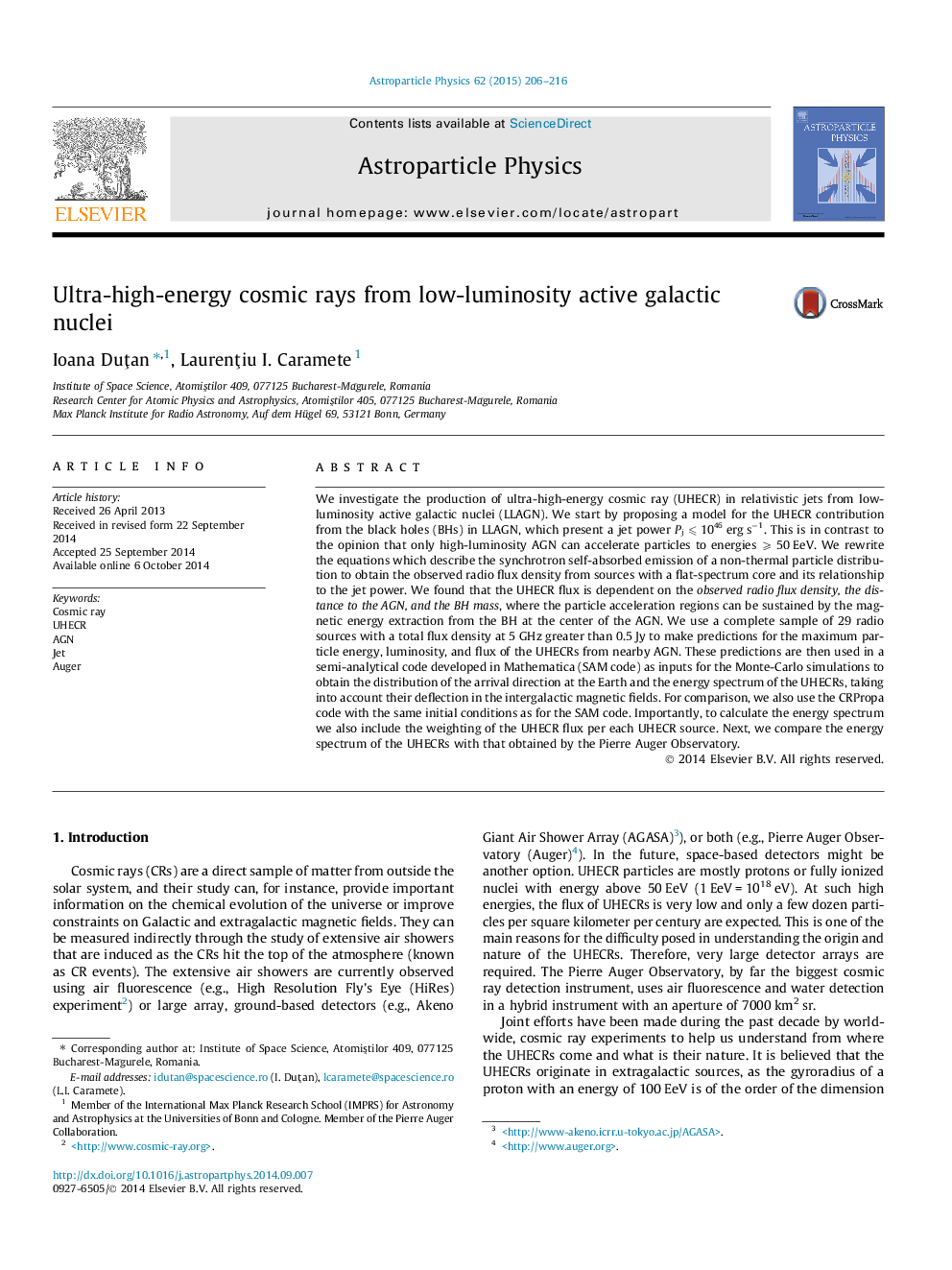| Article ID | Journal | Published Year | Pages | File Type |
|---|---|---|---|---|
| 8132937 | Astroparticle Physics | 2015 | 11 Pages |
Abstract
We investigate the production of ultra-high-energy cosmic ray (UHECR) in relativistic jets from low-luminosity active galactic nuclei (LLAGN). We start by proposing a model for the UHECR contribution from the black holes (BHs) in LLAGN, which present a jet power Pj⩽1046 erg sâ1. This is in contrast to the opinion that only high-luminosity AGN can accelerate particles to energies ⩾50 EeV. We rewrite the equations which describe the synchrotron self-absorbed emission of a non-thermal particle distribution to obtain the observed radio flux density from sources with a flat-spectrum core and its relationship to the jet power. We found that the UHECR flux is dependent on the observed radio flux density, the distance to the AGN, and the BH mass, where the particle acceleration regions can be sustained by the magnetic energy extraction from the BH at the center of the AGN. We use a complete sample of 29 radio sources with a total flux density at 5 GHz greater than 0.5 Jy to make predictions for the maximum particle energy, luminosity, and flux of the UHECRs from nearby AGN. These predictions are then used in a semi-analytical code developed in Mathematica (SAM code) as inputs for the Monte-Carlo simulations to obtain the distribution of the arrival direction at the Earth and the energy spectrum of the UHECRs, taking into account their deflection in the intergalactic magnetic fields. For comparison, we also use the CRPropa code with the same initial conditions as for the SAM code. Importantly, to calculate the energy spectrum we also include the weighting of the UHECR flux per each UHECR source. Next, we compare the energy spectrum of the UHECRs with that obtained by the Pierre Auger Observatory.
Keywords
Related Topics
Physical Sciences and Engineering
Physics and Astronomy
Astronomy and Astrophysics
Authors
Ioana Duţan, Laurenţiu I. Caramete,
